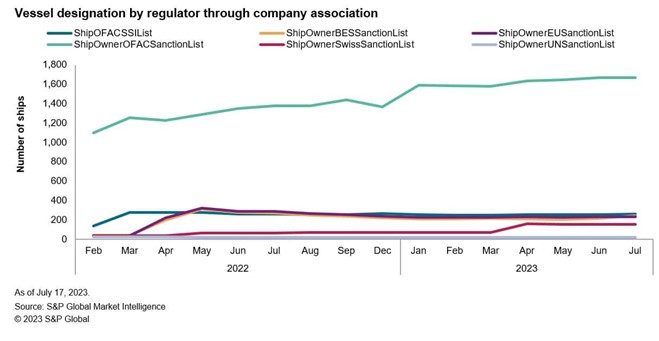-
 ITFA represents the rights and interests of banks, financial institutions and service providers involved in trade risk and asset origination and distribution.Our Mission
ITFA represents the rights and interests of banks, financial institutions and service providers involved in trade risk and asset origination and distribution.Our Mission
Published by S&P Global Market Intelligence and written by Jeremy Domballe, October 2023
Deceptive shipping practices began to emerge as a topic of interest following the US Treasury Department Office of Foreign Assets Control’s guidance on Deceptive Shipping Practices (2020). The guidance, at the time, highlighted seven practices that were pertinent in subterfuge shipping activities. Subterfuge shipping has always been an issue; however, this proverbial game of cat and mouse has continued to escalate in terms of the complexity of tactics used to circumvent these regulations, as well as the industry tools used to identify and combat them.
These tactics, historically used in activities related to Venezuela, Iran, Syria and North Korea have since also been employed in the shipping of Russian oil; many of which have evolved beyond the original scope. The formal sanctions placed against Russia are unparalleled, so the need for robust compliance frameworks and tools to carry out proper due diligence has never been higher.
The issue of vessel ownership itself and the need within industry to highlight and identify ultimate beneficial owners (UBOs) have widely been discussed and remains problematic owing to the complicated nature of vessel ownership.
This paper seeks to identify the key organizational movements observed within the global fleet, providing insight into possible behaviors and links used in subterfuge shipping.
Key points
Analysis
This section will cover multiple areas of interest identified within our companies database.
1. Sanctions escalation within the maritime sector
The sanctions landscape against Russia has escalated considerably since the initial sanctions of February 2022. Individual regulatory bodies have now gone through several rounds (with the European Union now on its 11th round) to restrict economic activity.
This has been felt rather strongly within the maritime domain, with a number of assets and entities being directly/indirectly targeted. The US, UK, EU and Switzerland are the most assertive in their designations, although different approaches are taken by these.
The link between entities and assets is key to better understanding and establishing possible sanctions risks. A direct contrast analysis of assets and entities shows that OFAC now currently has more than 700 vessels designated, with just under 200 maritime entities; however, when cross analyzing the underlying fleets relating to these entities, this shows more than 1,600 ships as of July 17, 2023.

2. New company registrations
Previous analysis conducted in April 2023 with a focus on Russian-affiliated entities showed a spike of 864 newly established maritime companies with an association or relationship to Russia; however, this rise in new companies being founded and incorporated was first seen in first half 2020, and continued through 2021.
Click here to download the full complimentary paper which includes the analysis of parent and care links, conflicting physical address of registration and single ship fleets.
Privacy Policy | Cookie Policy
Designed and produced by dna.studio